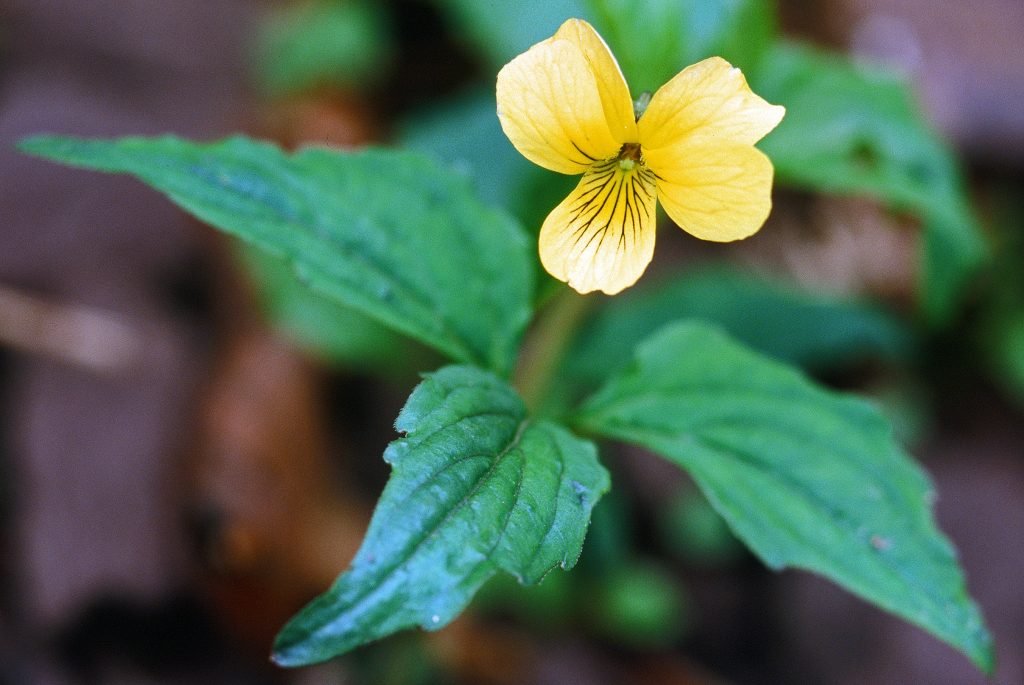Viola tripartita Ell. var. glaberrima (DC.) Harper
Kim’s notes and references. Illustrations: 6 photographs of Viola tripartita and 3 drawings (including Kim’s field notes)
Stephen Elliot, 1771-1830.
Sect. Chamaemelanium subsect. Nudicaules [Marcussen, 2011].
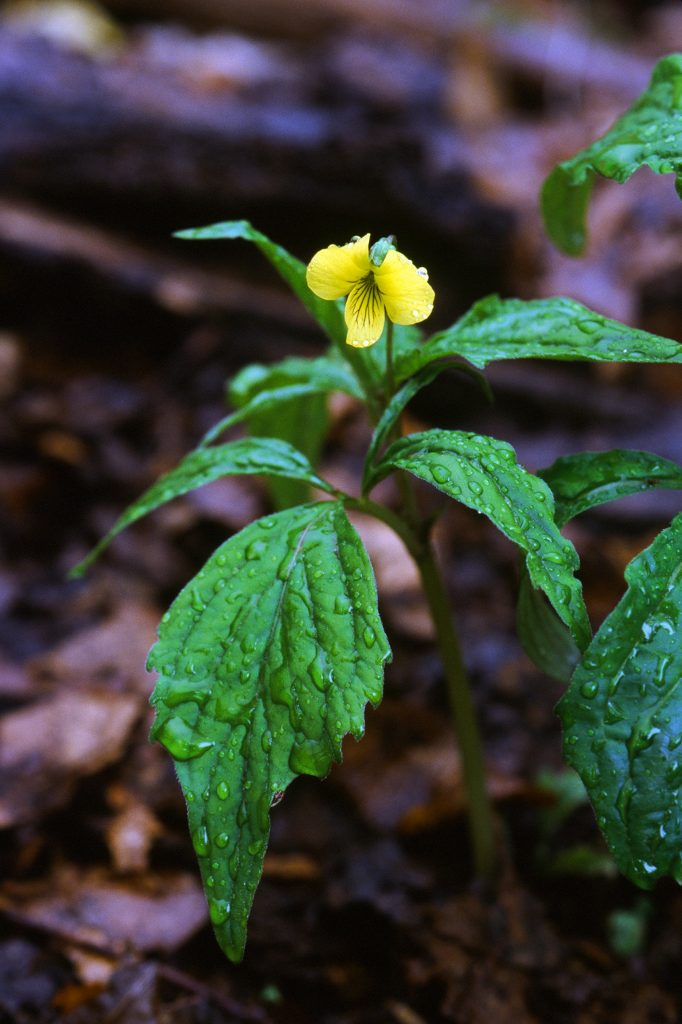
Rare. ?? Threatened, endangered, in some places wiped out already. Extinct (extirpated) in PA.: www.dickinson.edu/prorg/pabs/vascular_plants.htm. Harvey Ballard said there was a recent collection of V. tripartita var. glaberrima in the Carnegie Museum.
seed pods held vertically for a long time before they dehisce
alabamaplants.com website, with excellent photos:
Flowering – March – May. Habitat – Rich woods. Typically found on basic soils. Found mainly in the northern half of Alabama. The plant can be identified by its caulescent habit, entire stipules, wide leaves, and yellow flowers. Some forms of the plant have deeply dissected, three-parted leaves. [Photo April 16, Auburn, Alabama].
TM described the capsules as ‘trigonous’
dies down in hot dry summers
2n=2x=12.
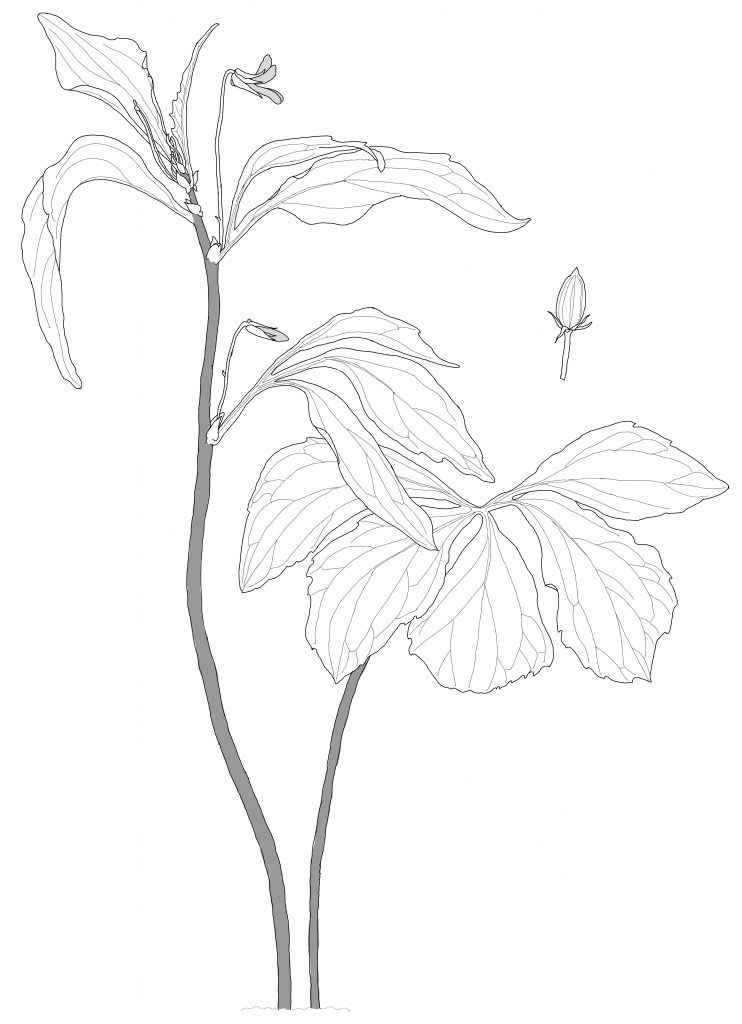
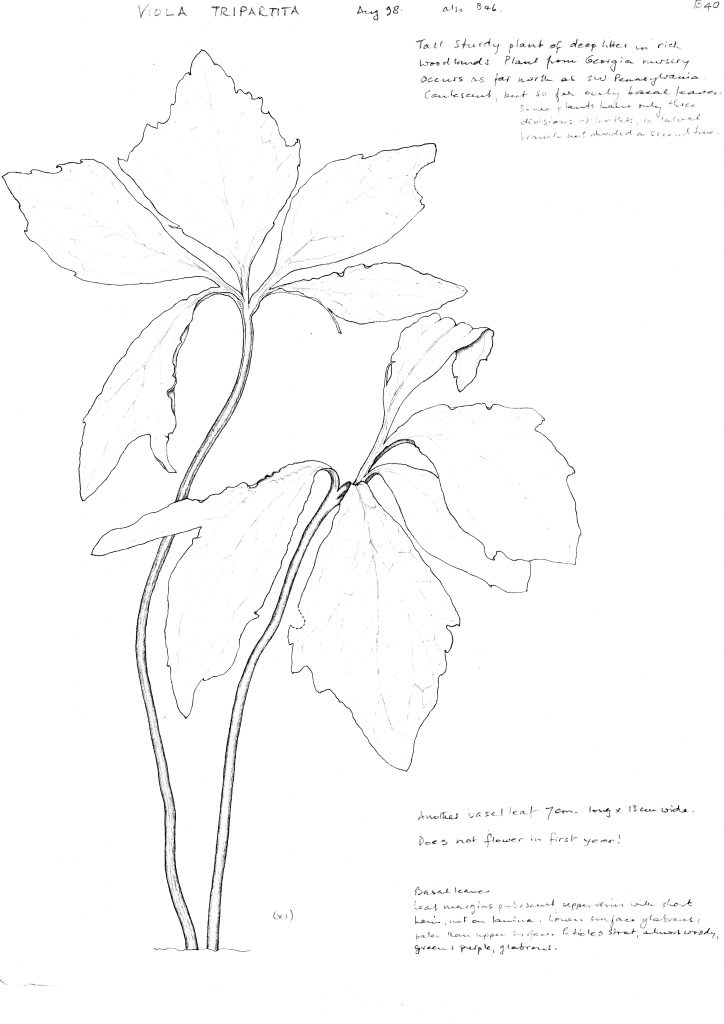
TM, 13 Jan 2010: I was impressed by the detail richness in the text by Holmgren [Intermountain Flora]. I saw that several chromosome counts were presented, without reference. Especially … 2n=12 in V. tripartita, which contradicts my finding that it is probably tetraploid (and the reason why I gave up analysing this species). Do you know where these counts come from?
TM, 10 July 07: I have now isolated DNA from all of the samples that I got in the US, and I have obtained test sequences of GPI from several of the Chamaemelanium diploids [2n=12]. I got a full sequence out of V. lobata, which groups closely with V. pubescens and tripartita — probably not a big surprise.

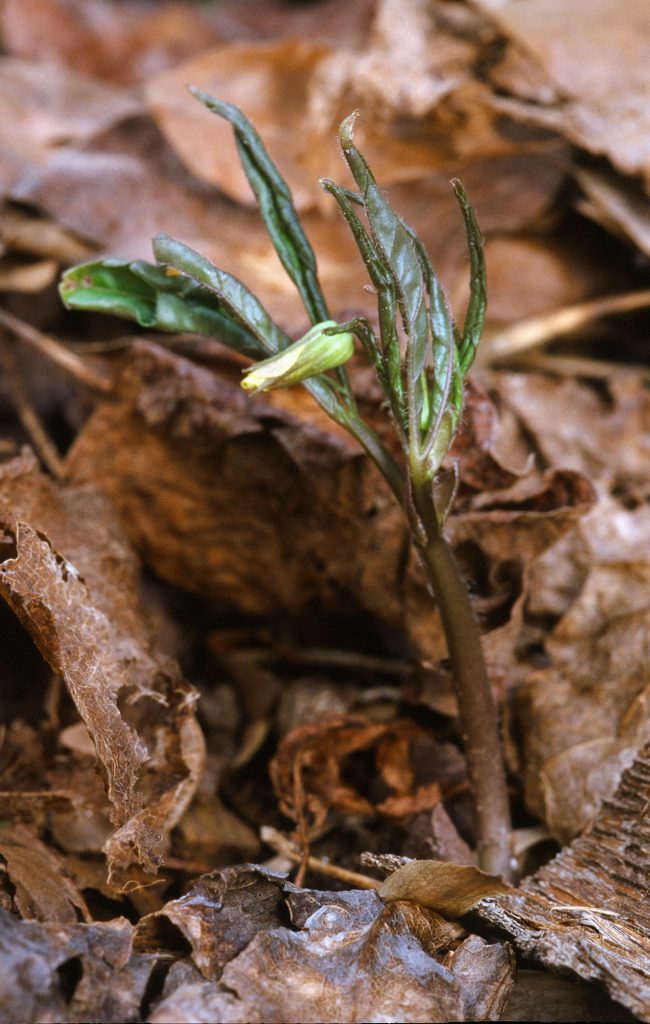
TM, 19 Aug, 07: You mentioned in your previous email that you always thought that V. douglasii and V. pedunculata were closely related. I agree, and as far as I can see their main distinction is the leaf shape, while the geophytic habit, absence of CL flowers and flower colour are basically the same, and even the distribution. I would not be surprised either if V. pedunculata grouped within the “core” polyploid Chrysanthae-Nuttallianae cluster.
Clearly leaf shape is highly modifiable in this group (and species like V. tripartita and V. lobata are even polymorphic) and I do not trust that it actually delimits species groups.
Droplets of nectar on keel petal in close-up photo of flower, 1998.
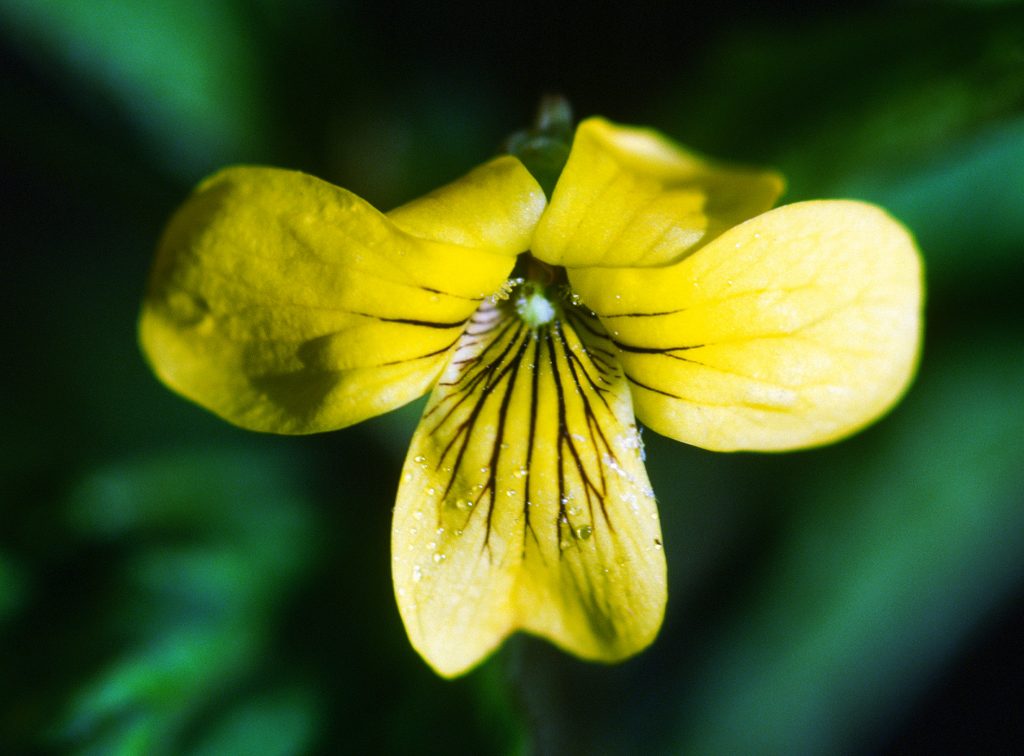
Rich woods (see Cronquist). Crown of plant 4-5” below ground level. Fine roots [??] and small, not stout, rhizome. Not an aggressive viola. ?soil type. ?glacial remnant. I don’t understand enough about glacial movement to be able to comment—ask Ernie Schyler. [I don’t know who told me this???].
Seeds huge, 2.0 x 2.8 mm, mottled brown, short colourless elaiosome.
Describe root system from my drawings. (See Kim’s pencil drawing, in this posting)
[USDA website: plants.usda.gov/cgi_bin/plant_profile.cgi?symbol=VITR4].
Occurs in all four quadrants of Tennessee, NW and west of Georgia, SE Kentucky, western North Carolina, NW South Carolina (about one third of the counties of the state), and only three counties of West Virginia, two in the SW and one in the NE; Scioto and Adams Counties in Ohio (where it is on the endangered list for each state).
Shredded by slugs in the late summer, also V. hirtipes nearby, but the other species around are not: Vv. selkirkii, yezoensis (China), hirtipes x japonica, pubescens, eizanensis.
From Ohio Department of Natural Resources: www.ohiodnr.com/dnap/heritage

Viola tripartita var. tripartita is easily distinguished from other stemmed yellow violets by its deeply three-parted leaves. Perennial herb to 4.5 dm.; flowers mid April-early May; fruits May-July. Dry oak or oak-hickory woods, total range N. MS [northern Mississippi?] to AL, GA, and SC, n. to NC, sw. PA, and s. OH. Dry oak or oak-hickory woods. In Ohio, Lawrence Co., rich woodland hilltop, Rock Hollow, August 1951, G. Hall, F. Bartley, & D. Macbeth 2417 (OU). State status: 1980-1983: Endangered. 1984 to present: Extirpated [extinct], possibly by the opening of the woodland canopy.
Russell (1965) recognized no infraspecific taxa in Viola tripartita. He stated that plants with uncut and/or divided leaves are sympatric and often intergrade. However, others recognize a var. glaberrima with undivided leaves. This taxon is currently considered endangered in Ohio. Viola tripartita var. tripartita should be sought throughout unglaciated Ohio. It may be missed because of its early blooming period. The species is wiped out but the var. glaberrima still exists though endangered.
SELECTED REFERENCES:
Cooperrider, T.S. 1995. The Dicotyledoneae of Ohio. Part 2. Linaceae through Campanulaceae. Ohio State Univ. Press, Columbus, OH. 656 pp.
Miller, L.D. 1976. The Violaceae of Ohio. M.S. Thesis. Kent State University, Kent, OH. 203 p.
Russell, N.H. 1965. Violets (Viola) of central and eastern United States: An introductory survey. Sida 2: 1-113.
Temperate forests, listed as endangered in Florida.
www.bio.unc.edu/faculty/peet/lab/CVS/veg/2-1.htm
In the Carolinas, Viola tripartita grows in the Piedmont sub-zeric oak (Quercus alba, Quercus rubra) and hickory (Carya glabra, Carya ovata) forest with Viburnum rafinesquianum.
biology.usgs.gov/npsveg/grsm/descript/qqcoc.pdf
Great Smoky Mountains National Park
The canopy is dominated by Quercus prinus and Acer rubrum. Other species that can have significant canopy coverage include Carya glabra and Liriodendron tulipifera. The subcanopy is dominated by Cornus florida. Additional canopy and subcanopy species can include Quercus rubra, Quercus velutina, Carya alba, Halesia tetraptera var. monticola, Nyssa sylvatica, Robinia pseudoacacia, and Oxydendrum arboreum. The shrub stratum is sparse with no clear dominant. Some typical shrub species include Gaylussacia ursina, Sassafras albidum, Nyssa sylvatica, Oxydendrum arboreum, Cornus florida, and Magnolia fraseri. Pinus strobus and Tsuga canadensis saplings are commonly in the shrub stratum. Herbaceous cover is sparse to moderate but species rich. Species with the highest coverage and constancy are Desmodium nudiflorum, Polystichum acrostichoides, and Thelypteris noveboracensis. Other species with high constancy include Aster divaricatus, Chimaphila maculata, Dichanthelium spp. (e.g. Dichanthelium commutatum, Dichanthelium dichotomum), Dioscorea quaternata, Maianthemum racemosum ssp. racemosum, Prenanthes spp., Thalictrum thalictroides, Uvularia perfoliata, Uvularia puberula, Uvularia sessilifolia, and Viola spp. (e.g. Viola blanda, Viola hastata, Viola palmata, Viola tripartita), but other species may occur. Common vines are Smilax rotundifolia, Smilax glauca, Vitis aestivalis, and Vitis vulpina.
tenn.bio.utk.edu/vascular/checklist/dicotss-z.html
Checklist of Tennessee Vascular Plants:
Viola tripartita Ell. var. glaberrima (DC.) Harper
Viola tripartita Ell. var. tripartita
www.discoverlife.org/nh/cl/ONF/plants.html Georgia Botanical Society
Viola tripartita grows in these three habitats within the Oconee National Forest, Georgia
B-OAK-HICKORY FOREST
C-OAK-PINE FOREST
D-PINE BARRENS, or PINE PLANTATIONS
www.uark.edu/misc/ents/fieldtrips/ south_carolina/alexander_creek.htm
Last weekend I explored parts of the Alexander Creek drainage, or as I sometimes think of the area, the land of pignut hickories. The creek flows through the Brevard Fault Zone at the piedmont-blue ridge interface in the northwestern corner of South Carolina. In March, I first visited the site due to it’s proximity, three miles south, to Tamassee Knob and topographic similarities. A 200 foot high escarpment in the western part of the watershed provides considerable sheltering to several of the east-aspect coves, but the coves as a whole appear substantially drier than the area around Tamassee Knob. White oak, northern red oak, and black oak share dominance over much of the area. Chestnut oak and pignut hickory are abundant in some of the coves and level benches. In narrow areas along the upper section of the creek black birch, tuliptree, and basswood form the canopy while on the flats farther downstream sweetgum replaces the black birch and basswood is less common. Overall, the understory is open, put rosebay rhododendron is abundant on the upper section of the creek and sweetshrub and blackberries are locally abundant.
The herbaceous layer includes calceophilic species like Collonsonia verticalla and Viola tripartita, but is generally sparse. I have never visited another area with such a preponderance of large hickories. This situation probably results from a combination of limited logging pressure on the hickories and nutrient rich, very well drained soils. Two of the scarlet oaks are competing with sweetgums. I normally see the southern red oak on drier, less fertile, piedmont sites. Jess Riddle Nov 18, 2003 07:45 PST

